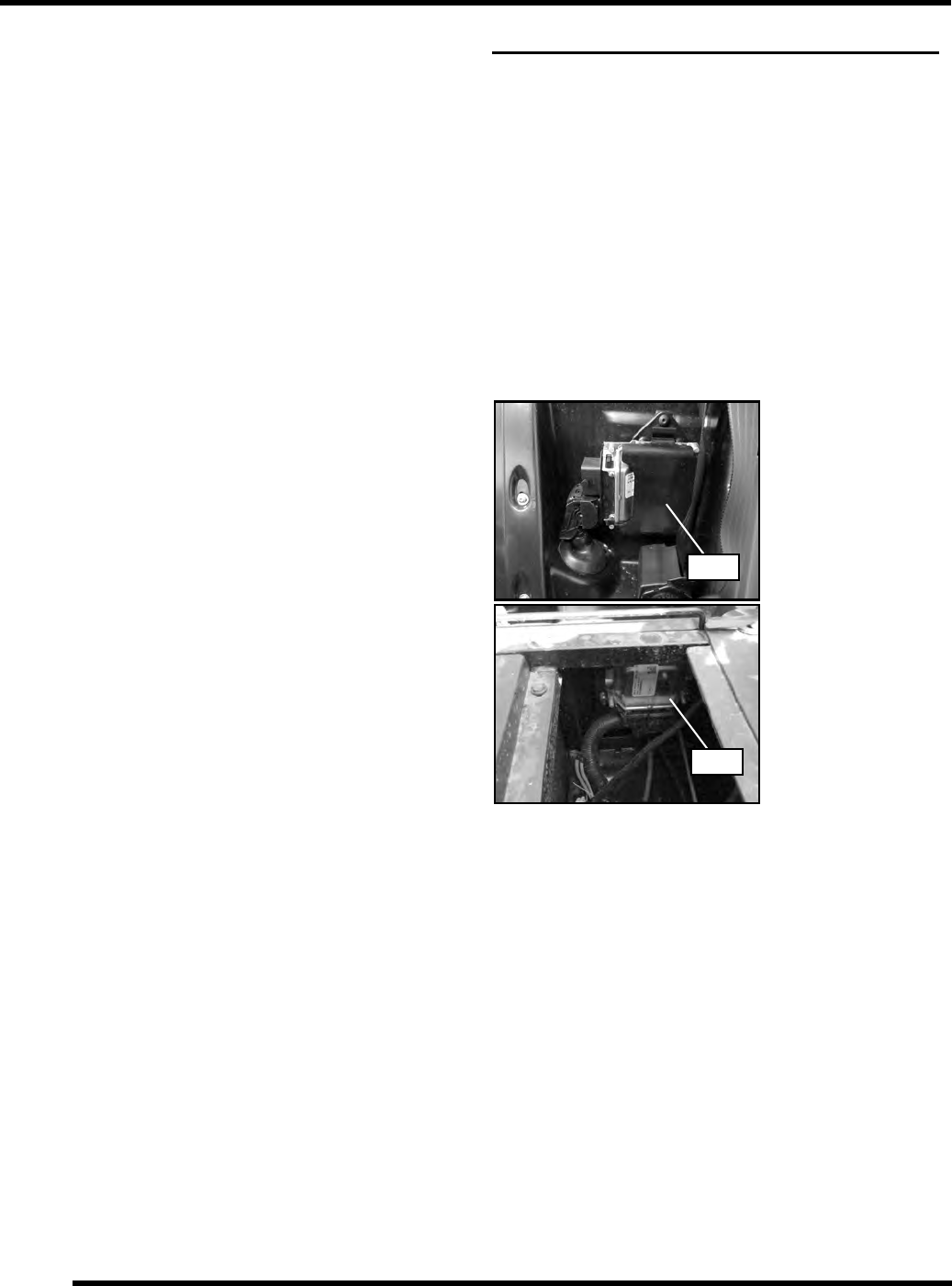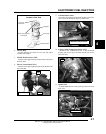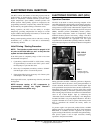
4.10
ELECTRONIC FUEL INJECTION
9923142 - 2011 RANGER RZR / RZR S / RZR 4 Service Manual
© Copyright 2010 Polaris Sales Inc.
The ECU controls the amount of fuel being injected and the
ignition timing by monitoring the primary sensor signals for
intake air temperature, manifold absolute pressure (load),
engine temperature, speed (RPM), camshaft position and
throttle position. These primary signals are compared to the
programming in the ECU computer chip, and the ECU adjusts
the fuel delivery and ignition timing to match the values.
During operation, the ECU has the ability to re-adjust
temporarily; providing compensation for changes in overall
engine condition and operating environment, so it will be able
to maintain the ideal air/fuel ratio.
During certain operating periods such as cold starts, warm up,
acceleration, etc., a richer air / fuel ratio is automatically
calculated by the ECU.
Initial Priming / Starting Procedure
NOTE: The injection system must be purged of all
air prior to the initial start up, and / or any time the
system has been disassembled.
If the EFI system is completely empty of fuel or has been
disassembled and repaired:
1. Cycle the key switch from “OFF” to “ON” 6 times, waiting
for approximately 3 seconds at each “ON” cycle to allow
the fuel pump to cycle and shut down.
2. Once step 1 is completed, turn the key switch to “START”
until the engine starts or 5 seconds has passed.
3. If the engine failed to start, repeat step 1 for 2 more cycles
and attempt to start the engine.
If the engine fails to start, a problem may still exist, and should
be diagnosed.
NOTE: Accurate testing of EFI components is
recommended utilizing the Digital Wrench™
Diagnostic Software (dealer only).
ELECTRONIC CONTROL UNIT (ECU)
Operation Overview
The ECU is the brain or central processing computer of the
entire EFI fuel/ignition management system. During operation,
sensors continuously gather data which is relayed through the
wiring harness to input circuits within the ECU. Signals to the
ECU include: ignition (on/off), crankshaft position and speed
(RPM), camshaft position (MAG/PTO), throttle position,
engine coolant temperature, intake air temperature, intake
manifold absolute pressure and battery voltage. The ECU
compares the input signals to the programmed maps in its
memory and determines the appropriate fuel and spark
requirements for the immediate operating conditions. The ECU
then sends output signals to set the injector duration and ignition
timing.
During operation, the ECU continually performs a diagnostic
check of itself, each of the sensors, and system performance. If
a fault is detected, the ECU turns on the “Check Engine” light
in the speedometer and stores the fault code in its fault memory.
Depending on the significance or severity of the fault, normal
operation may continue, or "Fail-Safe" operation (slowed speed,
richer running) may be initiated. A technician can determine the
cause of the “Check Engine” light by referencing the
“Instrument Cluster Trouble Code Display” and “Diagnostic
Trouble Code Table” or by using Digital Wrench™. The ECU
requires a minimum of 7.0 volts to operate. The memory in the
ECU is operational the moment the battery cables are
connected.
To prevent engine over-speed and possible failure, an RPM
limiting feature is programmed into the ECU. If the maximum
RPM limit is exceeded, the ECU suppresses the injection
signals, cutting off the fuel flow and retards the ignition timing.
This process repeats it self in rapid succession, limiting
operation to the preset maximum.
ECU
RZR / RZR S
RZR 4
- Located behind
driver’s seat
- Located under left
rear passenger seat
ECU


















